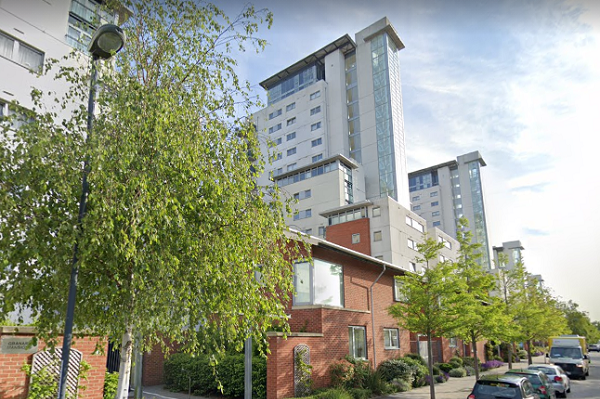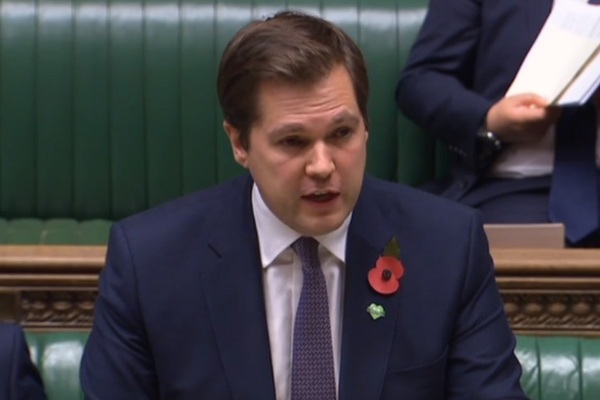You are viewing 1 of your 1 free articles
What will be the impact of Robert Jenrick’s cladding announcement?
Robert Jenrick has announced what he called “an exceptional intervention” on the cladding crisis to the House of Commons today. But what will it mean for the sector – and for leaseholders? Peter Apps finds out
What did Mr Jenrick announce?
There will be a further £3.5bn of government grant to pay for the removal and replacement of dangerous cladding systems on buildings taller 18m.
For those below 18m, the government will offer a long-term “financing solution”, whereby a loan will be made to the building owner and repaid by leaseholders, with a cap on repayments at £50 per month.
Finally, a new levy will be introduced for developers, which will become applicable when planning permissions are submitted for high-rise developments. An additional tax will be introduced for the residential property sector from 2022, which is expected to raise £2bn over 10 years to contribute to the cost of the crisis.
So will leaseholders still be paying?
Mr Jenrick was clear that the additional funding – which takes the total pot to above £5bn – will mean no leaseholders in buildings taller than 18m will be charged “for cladding remediation works”.
But this appears to be the limit of the funding, and other substantial costs – for the removal of dangerous balconies, missing fire breaks and so on – will continue to be met by leaseholders.
These costs can be huge: in one Manchester block they amount to bills of £100,000 per leaseholder. They are also widespread. Inside Housing’s survey of affected leaseholders published earlier today shows that 68.3% require repairs to defective fire breaks; 59.3% require the removal of combustible balconies; 53.6% require repairs to internal compartmentation – among a host of other costs.
This also applies to the loan and the £50 per month cap - meaning leaseholders in blocks below 18m will face a £50 monthly charge on top of the bill for other fire safety works.
Inside Housing has asked the Ministry of Housing, Communities and Local Government to clarify this point.
How does the loan scheme work?
The model appears to be based on the proposal designed by government advisor Michael Wade. A long-term, low-interest loan will be taken out by the building owner, who will then recharge the repayment cost to the leaseholder through the service charge.
But to get to £50 a month, the length of these loans will need to be enormous, potentially more than 50 years.
Leaseholders will have serious concerns that this plan will immediately reduce the value of their flat by the amount of the loan – plunging them into negative equity.
The practicalities will also be difficult: building owners may require authorisation from the Financial Conduct Authority to reclaim the charges.
Why have buildings below 18m been treated differently?
Mr Jenrick repeatedly emphasised that this was based on the advice of the government’s expert panel – that risk is exponentially higher in tall buildings.
But this seems an odd view, to which not all experts would subscribe. While height is undoubtedly a factor in assessing risk, it is just one of many, which include the type of cladding, the extent of its use, other fire safety defects, the occupancy of the building and the ease of evacuating it.
A cynical view would be that including buildings below 18m simply scales the problem beyond one the government thinks it can solve or afford.
How will the levy work?
We have scant detail on precisely what the levy will achieve. Mr Jenrick said there will be two schemes to recoup costs from industry: a levy that is introduced when applications to build high rises are made (to protect smaller builders) and a tax on the industry from 2022, which will raise £200m a year.
While it is undoubtedly positive to see the government reaching for a means to recoup some of the cash from those who have profited from the crisis, there is likely to be anger among leaseholders at the amount: under the current settlement, the industry will end up paying far less than they do.
Can social landlords access the funding?
This was a question put by the Labour MP Clive Betts, chair of the Housing, Communities and Local Government Select Committee, but it was not one that Mr Jenrick answered clearly.
The most likely outcome, based on the wording of the announcement, is that social landlords will be able to access the scheme in the way they can for the existing £1bn Building Safety Fund.
That is, they will be able to receive government funding to cover the amount they would otherwise have billed to leaseholders or if they face a viability challenge as a result of the crisis.
But that still leaves the sector with an enormous liability for fixing buildings, and one that will without doubt reduce its capacity to build the affordable homes the country so desperately needs.
Perhaps surprisingly, Mr Jenrick did not shy away from this.
“Of course, there are choices within this, and that in itself will have consequences and that will make it harder for those housing associations to invest more in affordable and social housing and other important aims they and I share, like making those buildings more energy efficient. That’s the difficult situation we find ourselves in,” he said.
Social landlords would do well to pin this quote somewhere for the next time a minister questions their record of delivering no homes.
Sign up for our fire safety newsletter
Already have an account? Click here to manage your newsletters
Sign up for our Retrofit Challenge Virtual Summit
If topics such as those mentioned in the above article are of interest to you, register for our Retrofit Challenge Virtual Summit here.













